A View From … The Historic Railroad Trail in Nevada
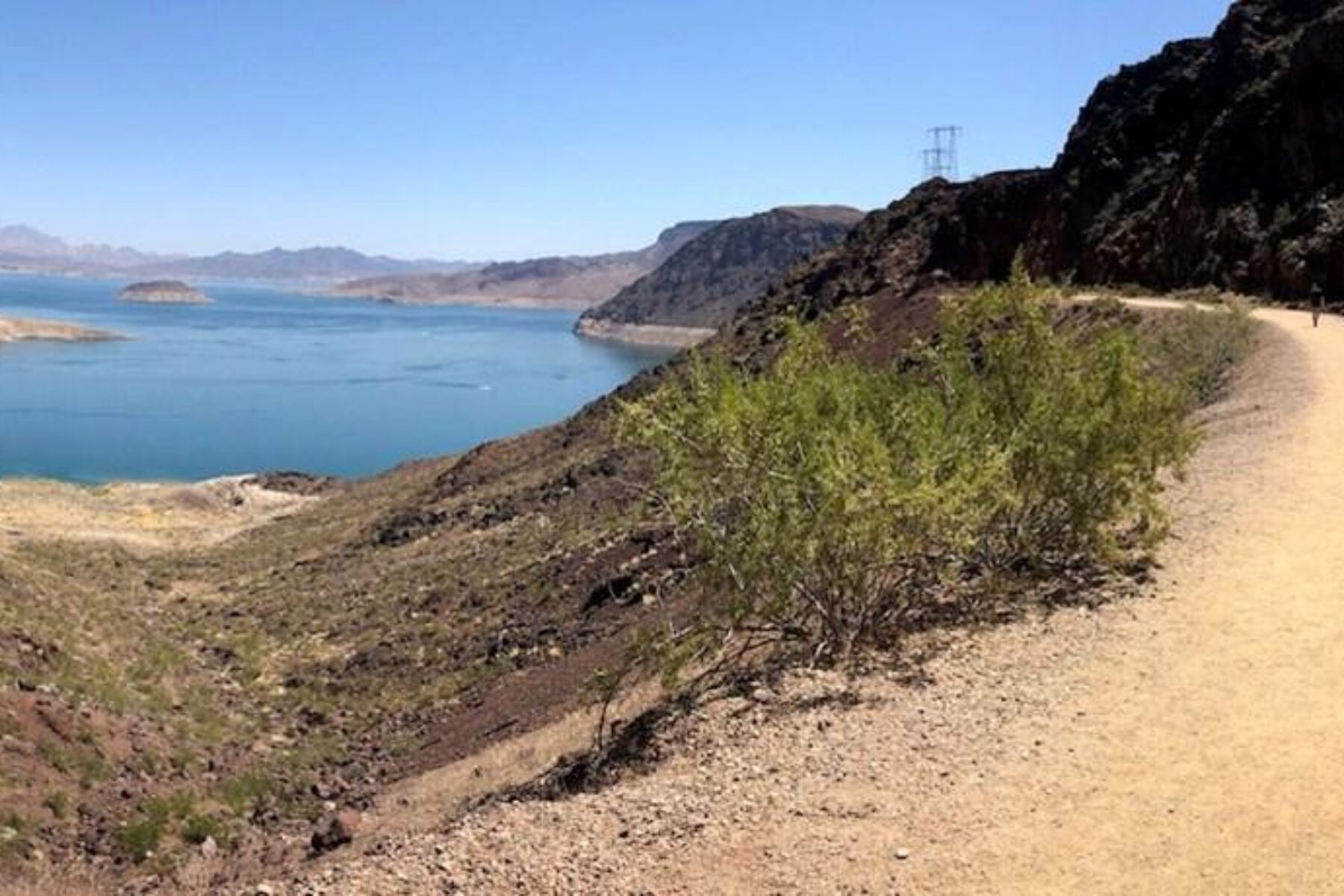
Between the fascinating railroad history and the stellar Lake Mead views, the Historic Railroad Trail in southern Nevada in Clark County packs quite a punch into its 3.7-mile route. Following the route of an early-1930s railroad that was built specifically to serve the construction of the nearby Hoover Dam, the trail offers a unique insight into that mammoth engineering feat.
Along the first 2.5 miles, hikers and cyclists pass through five enormous tunnels that burrow through rugged volcanic rock. A sign along the way explains that workers toiled around the clock in three shifts in 1931 and got the railroad project done in just five months. The railroad ceased to operate soon after the completion of the Hoover Dam in 1935, and the railroad tracks were removed in the 1960s. The route opened as a recreational trail in 1995.
Today, the trail’s shady tunnels offer a startling contrast to the sunny blue skies of southern Nevada, and hikers silhouetted against the bright horizon are iconic images from the trail.
As enthralling as it is, though, the railroad history is just one of the trail’s treasures. For much of the route, trail users are treated to sweeping views of the electric-blue waters of Lake Mead, dotted in the distance with boaters, water skiers and personal watercraft. Christie Vanover, public affairs officer for the Lake Mead National Recreation Area, says the trail’s beauty, its accessibility, and its easy, flat surface combine to make the Historic Railroad Trail the recreation area’s most popular trail.
Typically, the trail provides access to the Hoover Dam, but that section of the trail was shut down temporarily in March 2020 because of the COVID-19 pandemic. Officials with the U.S. Bureau of Reclamation, which manages the dam, say it is uncertain when the section of the trail will open back up.
Meanwhile, the first 2.5 miles or so of the trail remain open to the public.
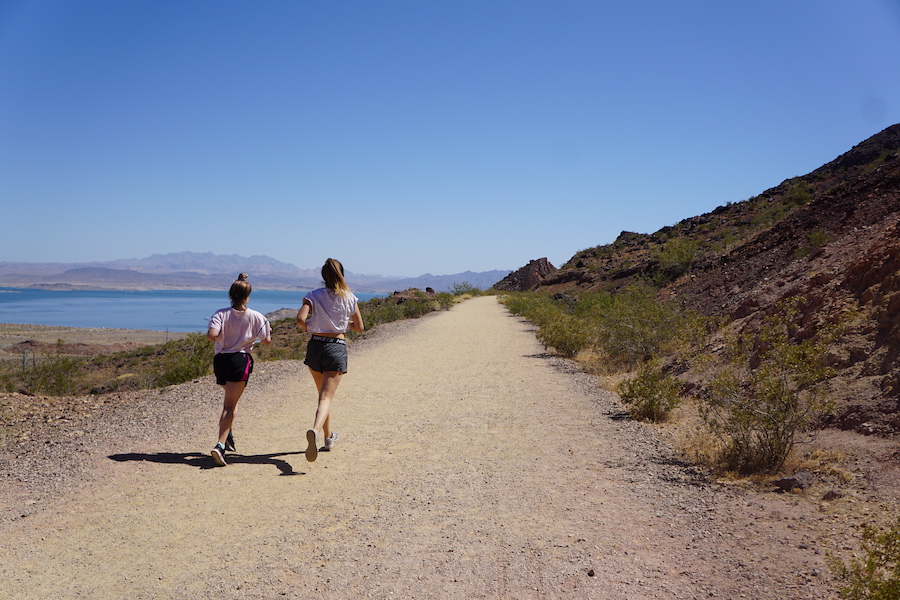
The trail, near Boulder City, attracts a steady stream of runners, walkers and cyclists. Joggers Elizabeth Gangale and Julia Rude of Henderson were on the trail on a June 2020 morning.
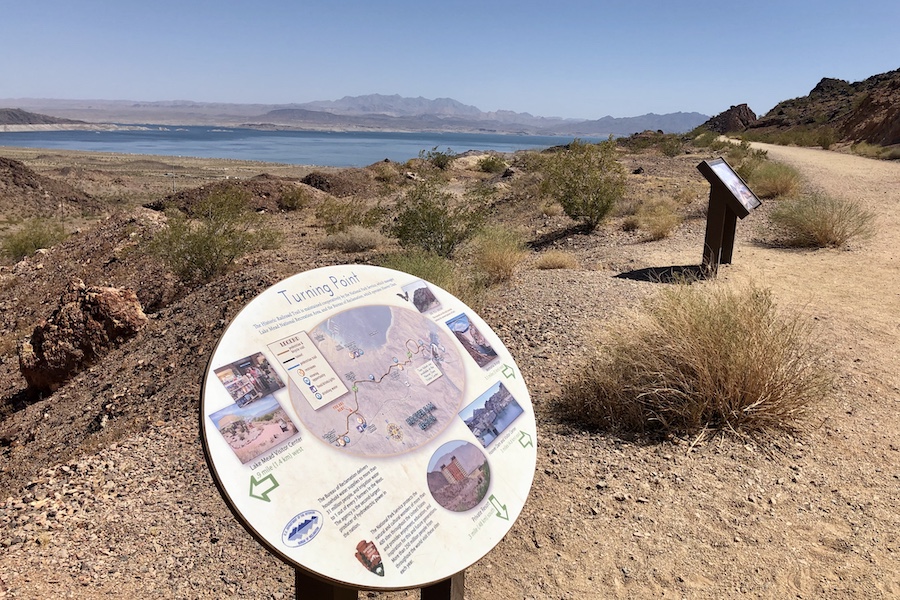
A series of interpretive signs appears along the Historic Railroad Trail providing insight into the history and habitat of the area. The trail is maintained cooperatively by the National Park Service, which manages the Lake Mead National Recreation Area, and the Bureau of Reclamation, which operates Hoover Dam.
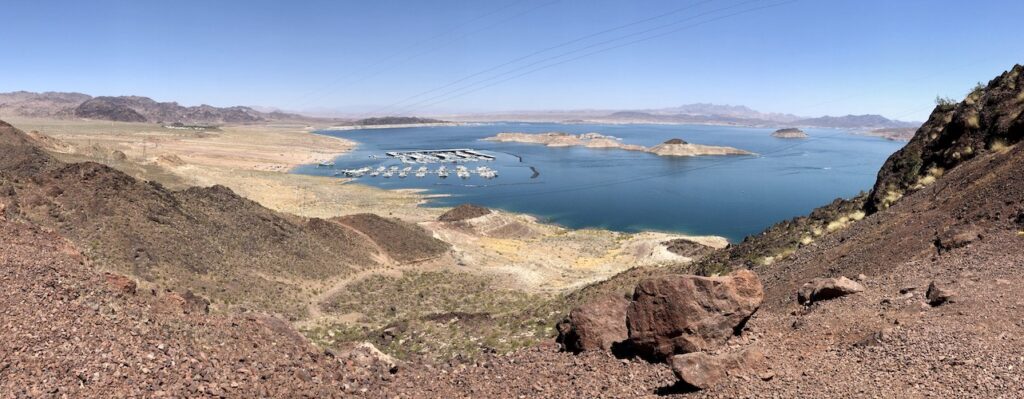
Much of the Boulder Basin is visible from the Historic Railroad Trail, located near Boulder City. The trail, which overlooks Lake Mead and its picturesque marina, offers consistently stellar views.
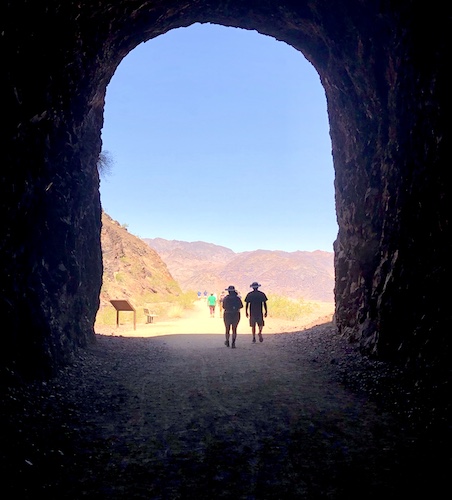
Among the unique features of the Historic Railroad Trail are five tunnels spaced along the first 2.5 miles of the trail. Not only do the tunnels provide cool shade for trail users, but they frame the views of the rugged surrounding terrain.
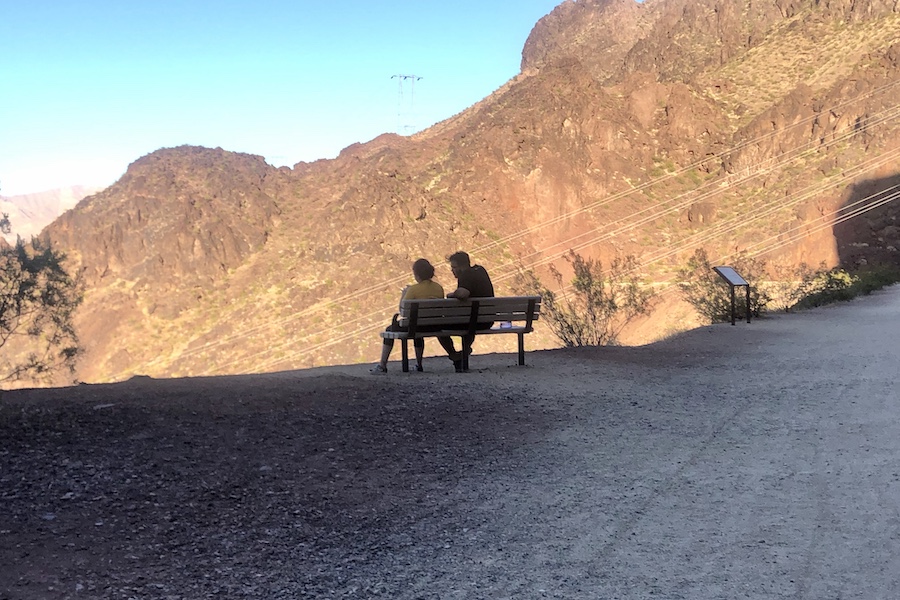
Walkers Audrie Bojorquez and Luis Cisneros take advantage of the shade and cooler temperatures that come to the Historic Railroad Trail as dusk fails. The two were among a steady flow of trail users on a warm evening in July 2020.
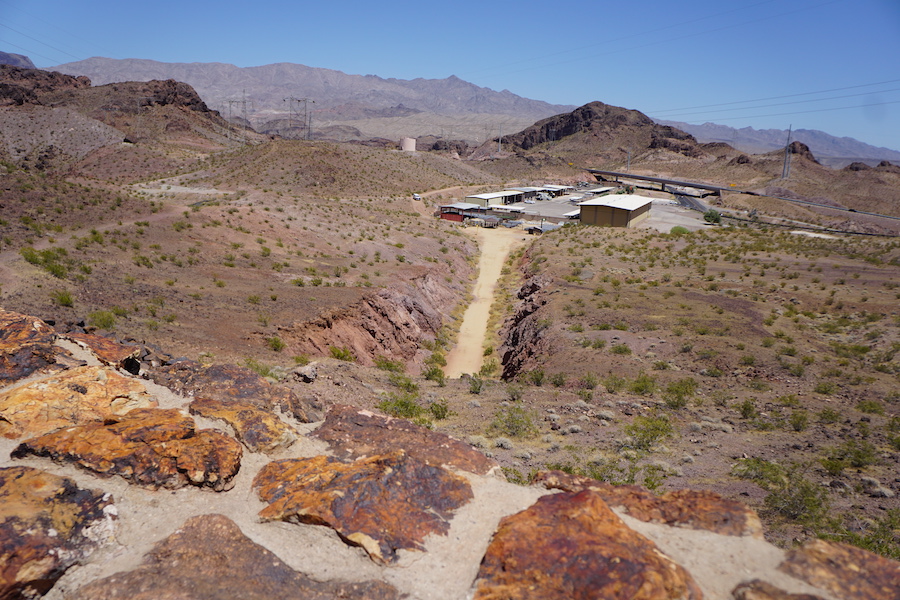
A U.S. Bureau of Reclamation facility and a portion of the Historic Railroad Trail are visible from the scenic vantage point that overlooks Lake Mead near the Nevada/Arizona border. The facility is located near the Hoover Dam.
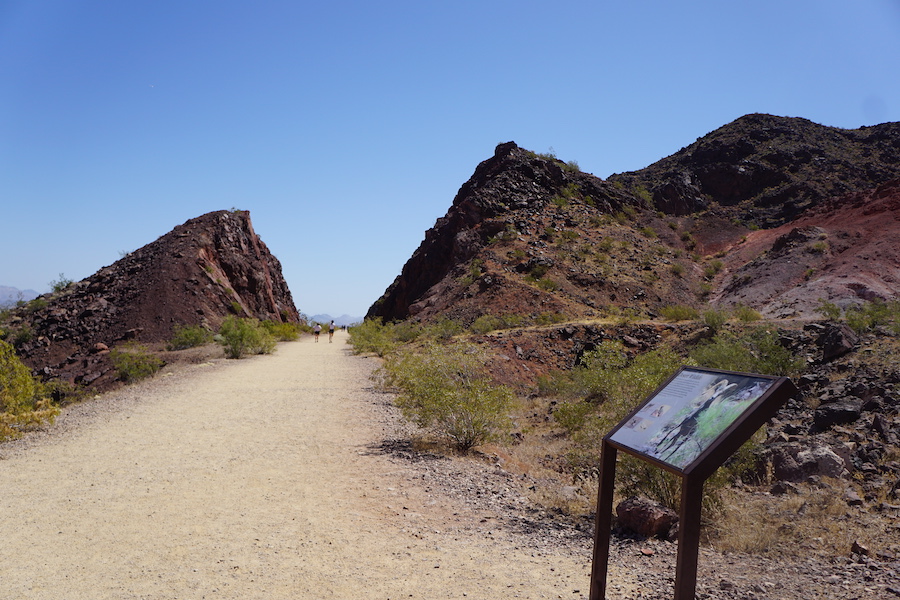
Volcanic rock had to be cut for the 1930s-era construction of the railroad line to the Hoover Dam construction site. Today, the route serves as a recreational trail that attracts walkers, cyclists and runners.

Boaters, water skiers and personal watercraft can be seen recreating on Lake Mead from the Historic Railroad Trail, which overlooks the lake. The sweeping views of the lake are among the main attractions of the trail.
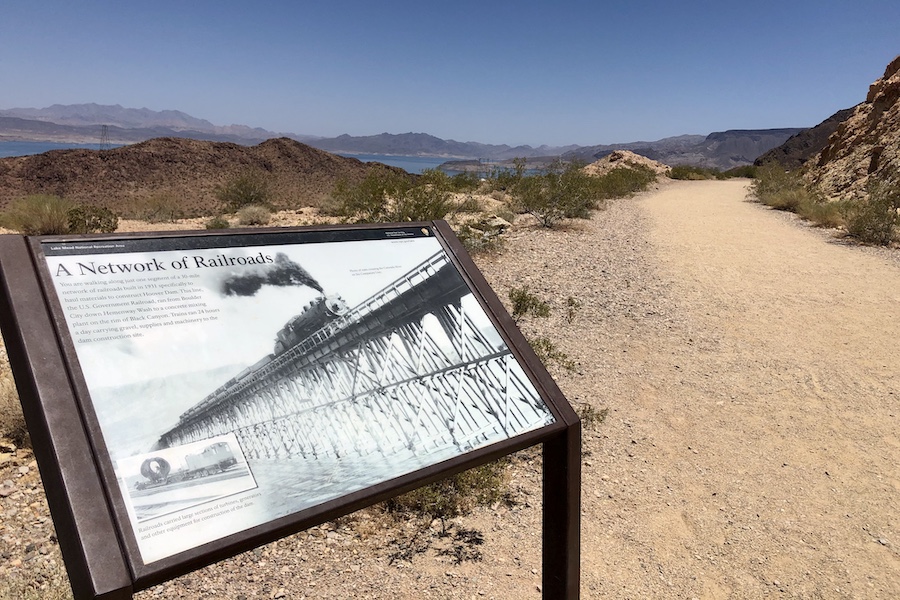
Railroads were central to the mammoth task of building the Hoover Dam in the 1930s, and this sign informs users along the Historic Railroad Trail of its history. In those days, trains ran 24 hours a day carrying gravel, supplies and machinery to the dam construction site.
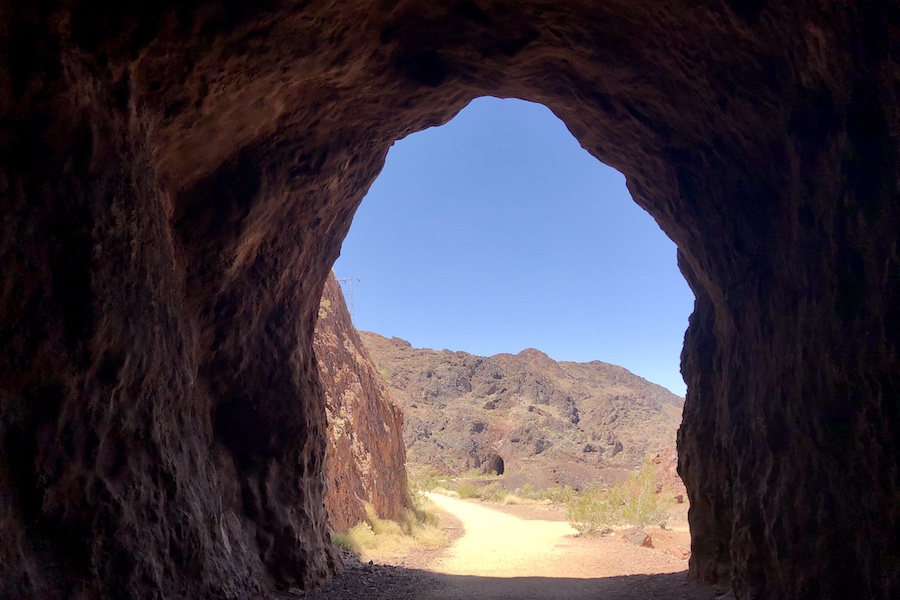
With nearly 300 days of sunshine a year, the Lake Mead area features plenty of blue sky, which peeks through the five tunnels along the Hoover Dam-area Historic Railroad Trail.
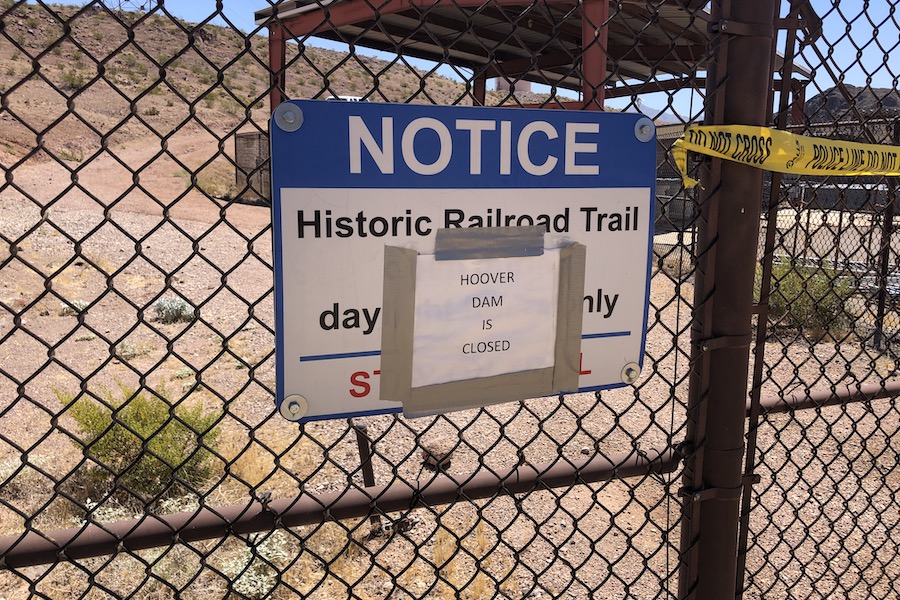
Typically, hikers and cyclists along the trail are able to continue on just past the halfway mark toward the Hoover Dam. Because of the COVID-19 pandemic, that section was shut down in March 2020 for an undetermined period of time.
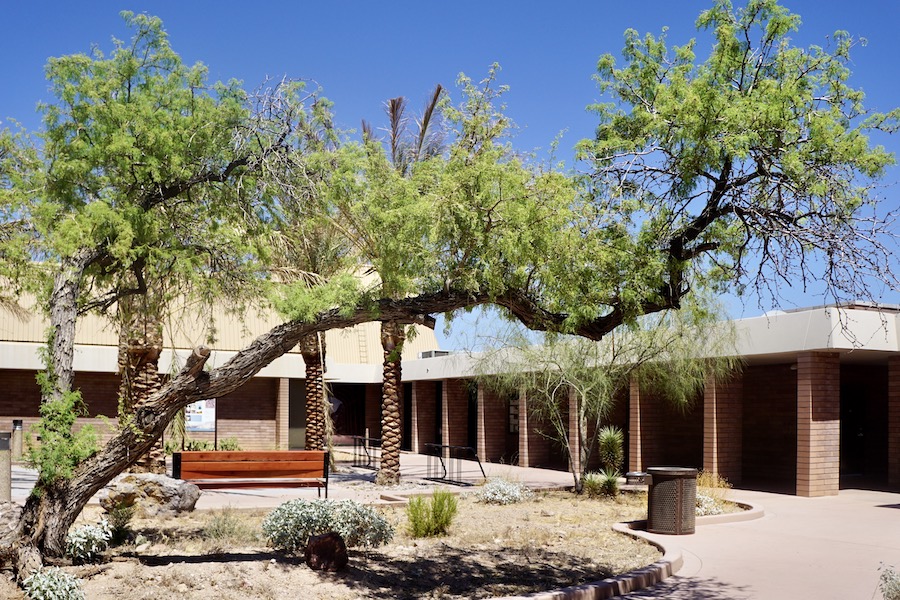
The Alan Bible Visitor Center serves as a gateway to the Historic Railroad Trail in the Lake Mead National Recreation Area. With its pretty, shady courtyard and modern restrooms, the visitor center is a perfect place to stop before or after a hike along the trail.
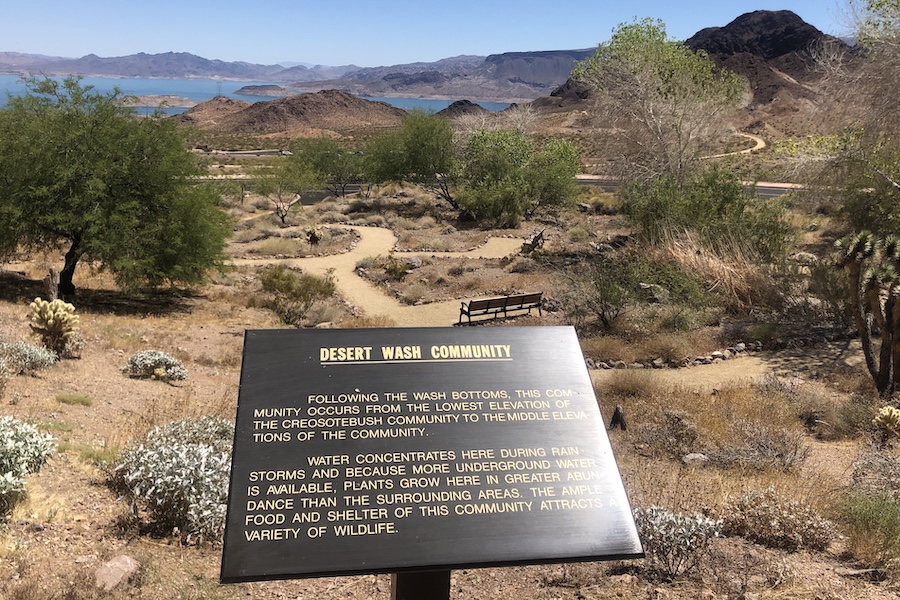
The Alan Bible Visitor Center overlooks a wash that features a variety of desert plant life. “Water concentrates here during rainstorms, and because more underground water is available, plants grow here in greater abundance than [in] the surrounding areas,” the interpretive sign explains.
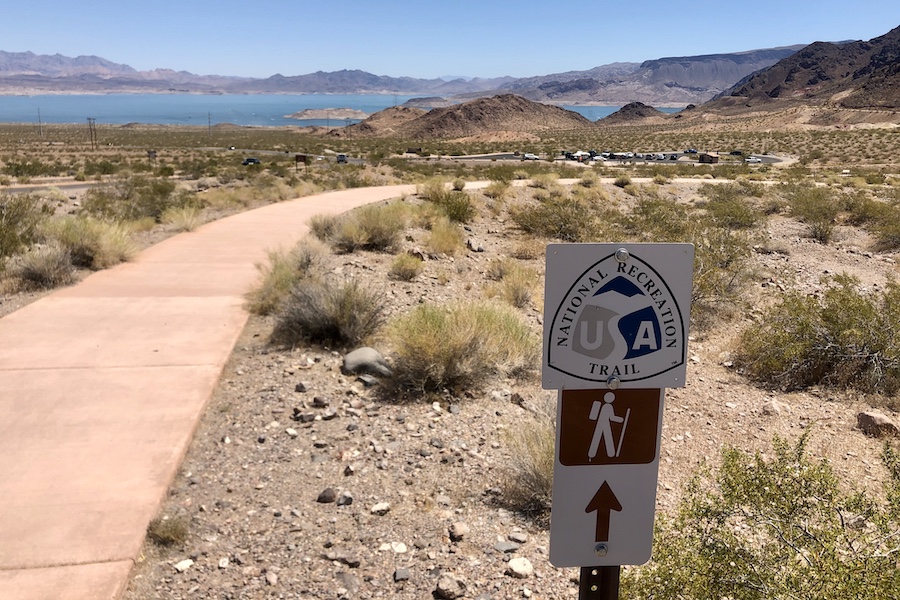
From the Alan Bible Visitor Center at the entrance to the Lake Mead National Recreation Area, a paved trail heads downhill slightly to the start of the Historic Railroad Trail, which is a National Recreation Trail.
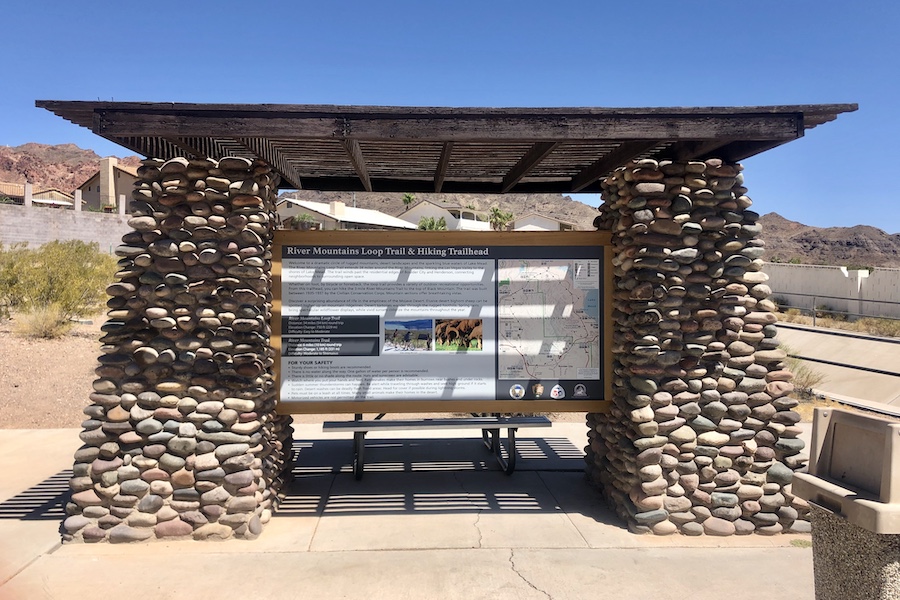
For cyclists who want a longer route than the 3.7-mile Historic Railroad Trail, the connecting River Mountains Loop Trail offers a 35.3-mile route through the area.
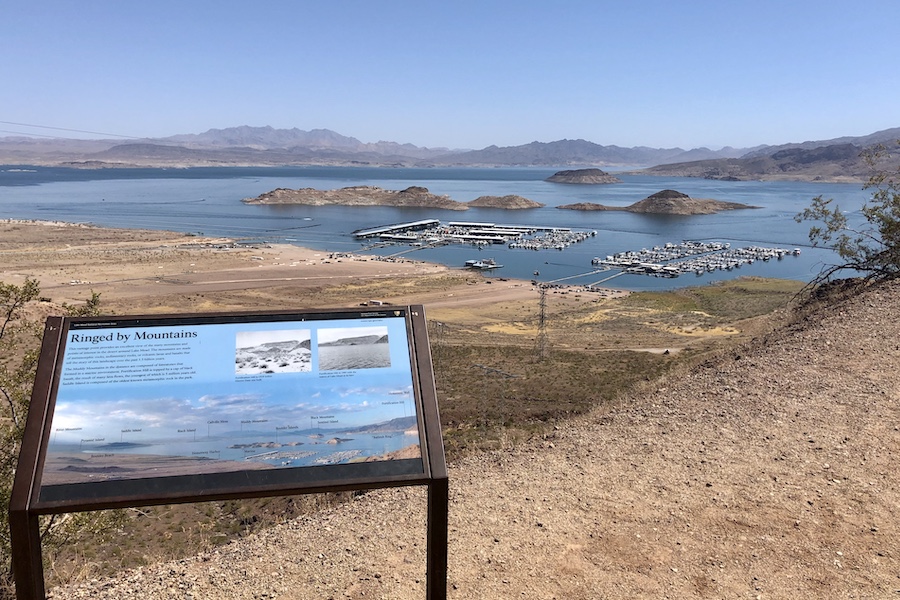
A number of mountain ranges are visible from the Historic Railroad Trail, including the Muddy Mountains, visible in the distance, and the Boulder Islands that rise from Lake Mead itself.
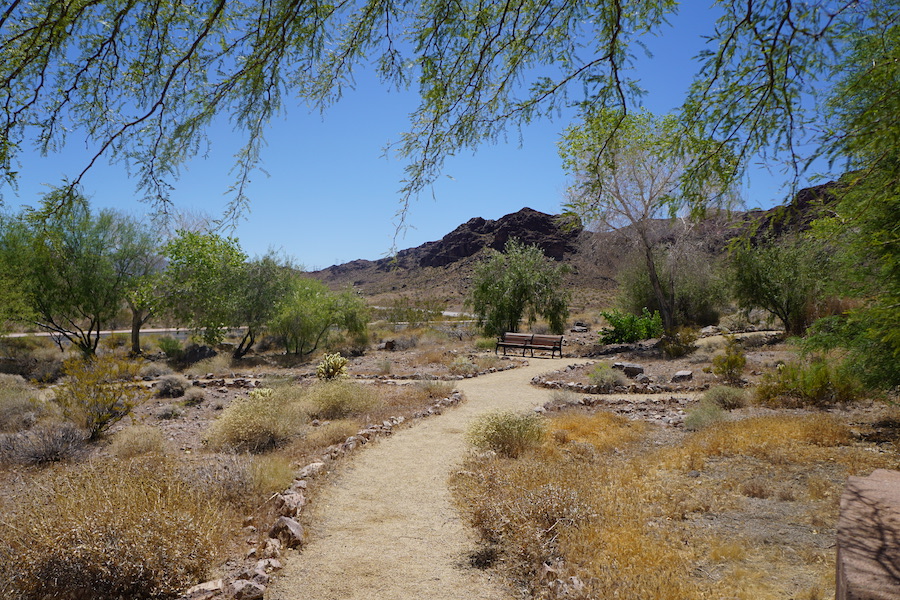
Paths crisscross the grounds of the Alan Bible Visitor Center, the facility located not far from the trailhead to the Historic Railroad Trail.
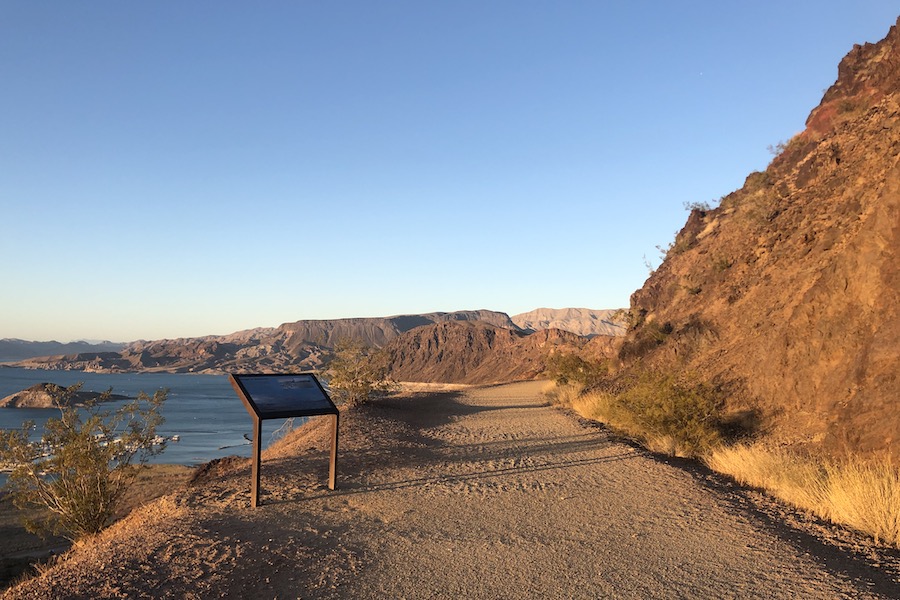
Dusk brings jewel-toned colors and long shadows to the wide, flat surface that makes up the Historic Railroad Trail.
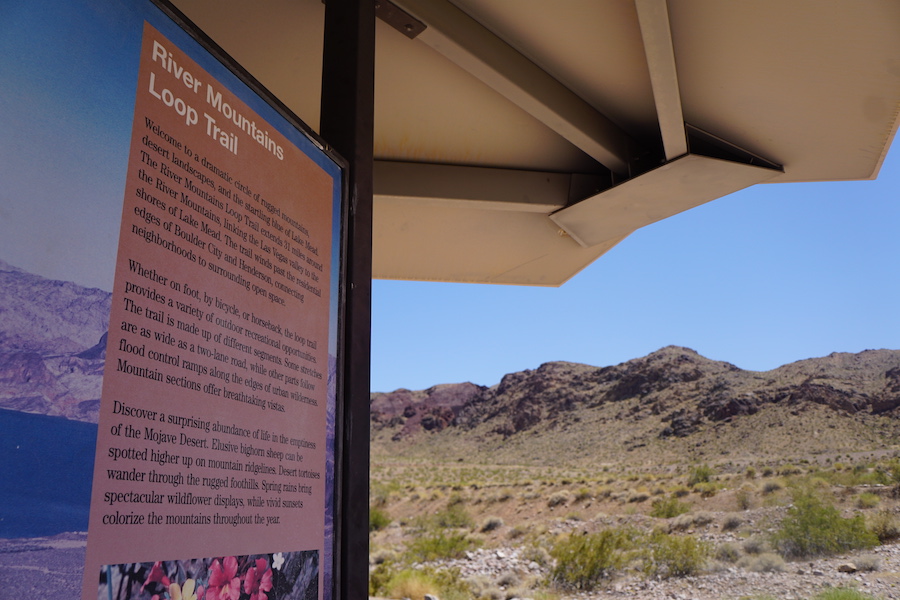
The River Mountains Loop Trail and the Historic Railroad Trail share a trailhead; the 35.3-mile loop trail offers an option for walking and cycling longer distances. About 3.5 miles of the loop trail follows the route of an old railroad that ran from Boulder City to the Hoover Dam.
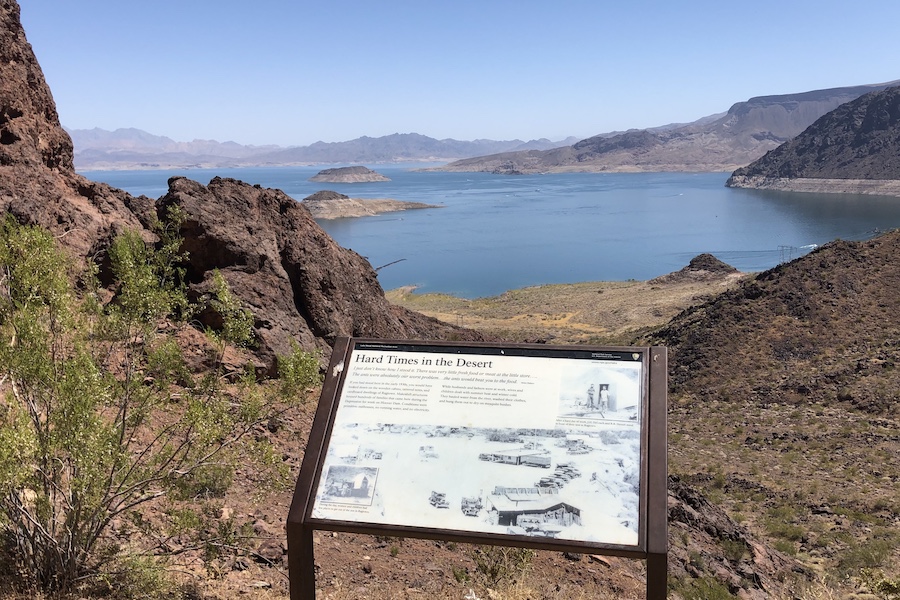
A sign along the Historic Railroad Trail commemorates the site of the 1930s-era Ragtown, a dusty village of primitive wooden cabins, tattered tents and cardboard dwellings that once housed the hundreds of families that came to the area to work on the construction of the Hoover Dam during the Great Depression.
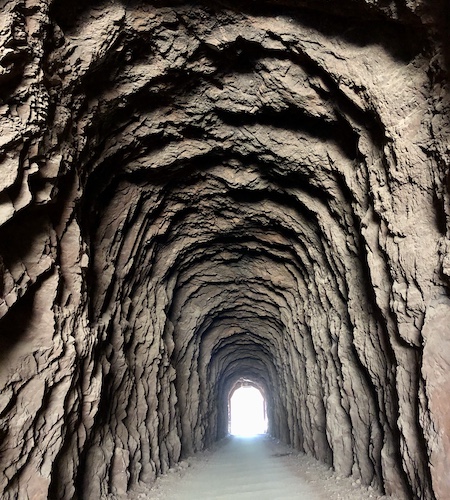
The Historic Railroad Trail’s five tunnels serve as homes for colonies of Mexican Free-tailed Bats, whose distinctive pings and chirps can be heard from the rocky ridges of the tunnels.

Off the Trail: Bighorn sheep are common sights near Lake Mead, and regularly come down from the mountains to water and graze in Boulder City’s 10-acre Hemenway Valley Park, which is a few miles from the Historic Railroad Trail, and is known as one of the best spots to watch area wildlife.
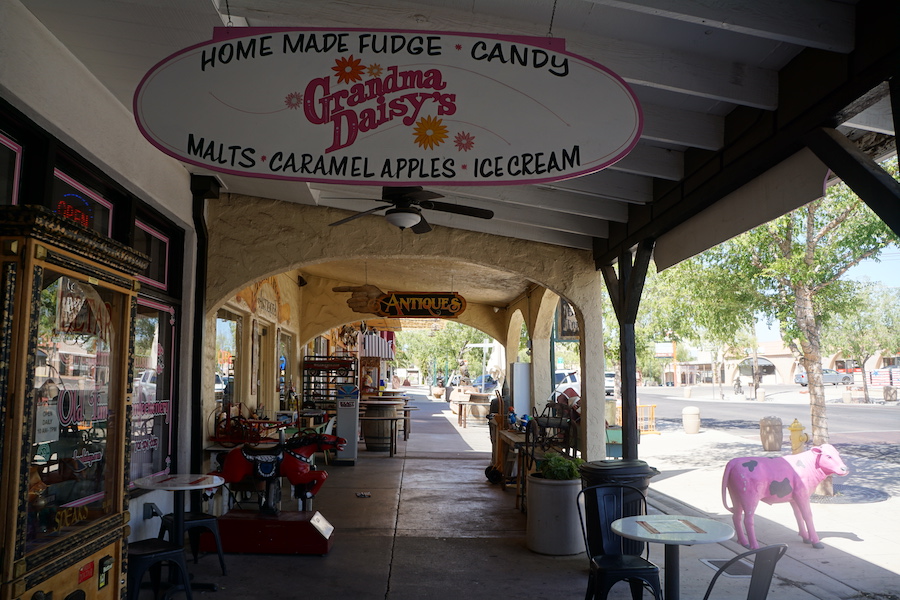
Off the Trail: Downtown Boulder City, located 7 miles or so from the Hoover Dam, has an array of shops, antique stores and cafés. The town was developed during the 1930s-era construction of the Hoover Dam.
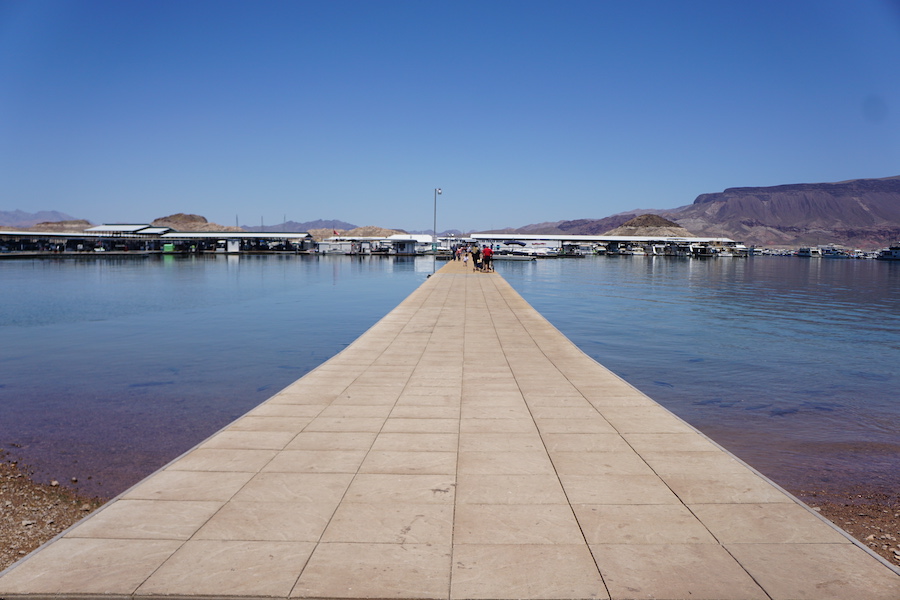
Off the Trail: The Lake Mead National Recreation Area features a number of marinas for launching and docking a boat, boat rentals and paddlewheeler cruises. The marinas also offer shops and cafés.
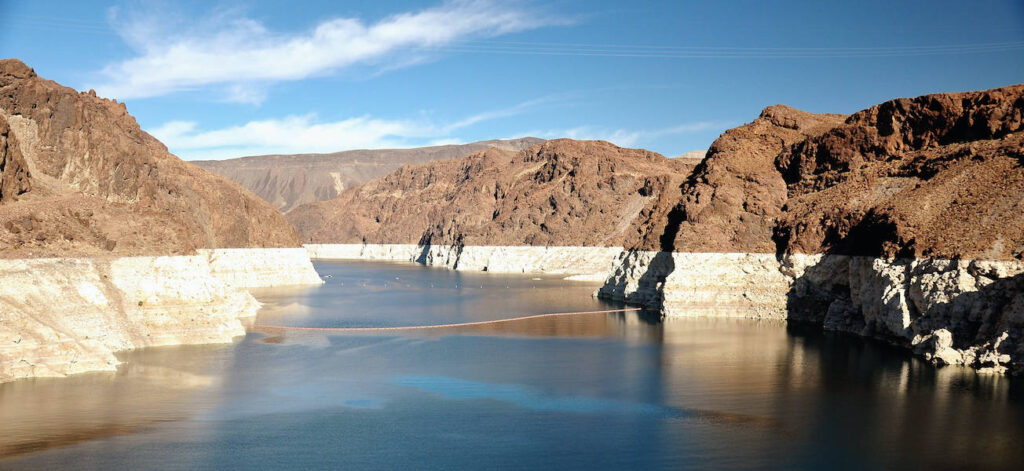

Donate
Everyone deserves access to safe ways to walk, bike, and be active outdoors.